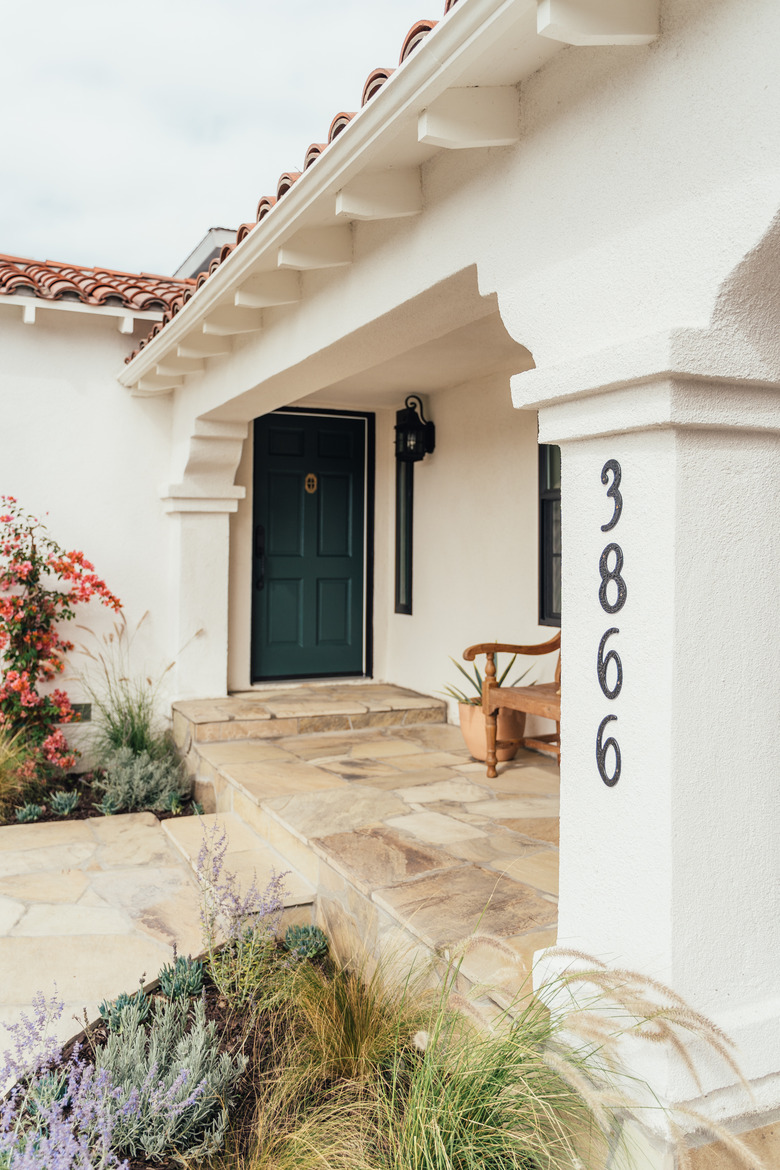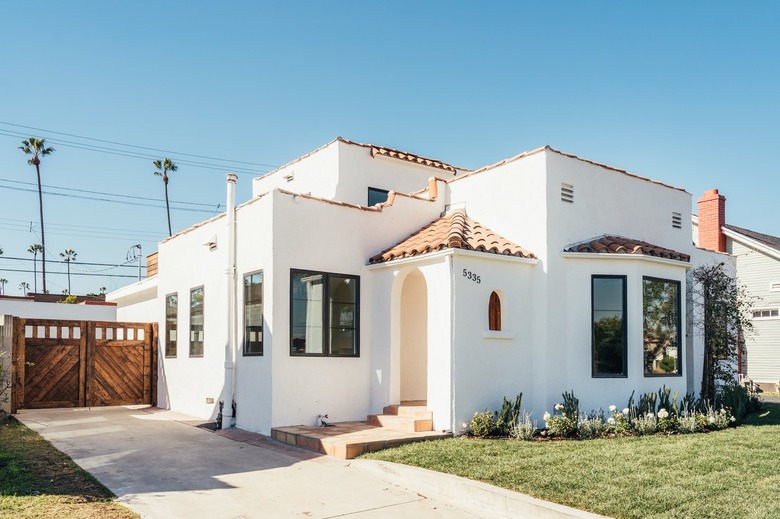What Is Private Mortgage Insurance?
The "golden standard" of a down payment on a house is 20 percent — but that is largely unrealistic for the modern homebuyer (especially a first timer or someone who lives in a pricey market). If you're entering the realm of homeownership for the first time and applying for a mortgage you can still buy a home with less than 20 percent down. However, you'll have an increase on your monthly payment (or, alternatively, the total amount of closing costs) due to something called private mortgage insurance, otherwise known as PMI.
So, what exactly is PMI? It's a type of insurance that lenders require borrowers to take out on a mortgage loan because it is deemed a riskier investment. PMI costs are covered by the borrower and can be paid in more than one way, and the insurance remains until the buyer has either gained 20 percent in equity in the home or paid them off in one lump sum at closing.
Here's more information about PMI — including how much it'll cost you, how you pay for it, and most importantly how you can stop paying for it.
How Much Does Private Mortgage Insurance Cost?
How Much Does Private Mortgage Insurance Cost?
As a general rule, a lender requires private mortgage insurance for any conventional loan for which the down payment is less than 20 percent, but how much it costs depends on many variables. When the lender requires PMI for the loan, it can cost anywhere from 0.5 percent to 1 percent of your loan balance each year, and to determine at which end of this range your PMI premiums will fall, lenders look at:
- Size of loan
- Type of loan (fixed or adjustable rate)
- Amount of down payment
- Term of the loan
- Borrower's credit score
- Conventional loan or nonconventional (for example, jumbo) loan
To assess the risk, lenders use a number called the loan-to-value ratio (LTV), which they get by dividing the amount of the loan by the appraised value of the property and multiplying by 100 to get a percentage. The smaller this ratio, the smaller the risk, and lenders generally consider an LTV of 80 percent or less safe enough to forgo personal mortgage insurance. A higher LTV means higher PMI costs to the borrower, especially one with a less-than-excellent credit score (760 is considered an excellent score).
Tip
If you buy a house that is $400,000 you can generally expect to pay around $2,000 — $4,000 every year for PMI (which amounts to $166 — $333 per month). Ultimately the amount you pay for PMI annually will depend on your credit score, down payment, and the terms of the loan.
Ways of Paying PMI Costs
Ways of Paying PMI Costs
When homebuyers take out a loan that requires PMI, they can pay for it in one of four ways.
1. Pay it Monthly
The most common way is for the lender to simply add the fee to the monthly mortgage payment. You continue to pay this fee until the amount you owe is less than 78 percent of the appraised value. At this point, the lender is required by law to stop charging the fee.
2. Pay it in a Lump Sum with Closing Costs
A second way to pay PMI is as a lump sum that gets tacked on to the closing costs at the beginning of the loan, and while this will lower monthly payments, borrowers have to come up with more cash up front and don't get any of this money back if they sell the house after a few years.
3. Pay it via Higher Interest Rate
A third scenario has the lender technically paying the PMI premiums and passing on the cost to the borrower by charging a higher interest rate. Because interest rates are determined at the beginning of the loan, you keep paying PMI even after your LTV reaches its benchmark 80 percent. However, the interest rate hike often results in smaller monthly payments than you make when you pay PMI fees.
4. A Combination Upfront and Monthly Payment
The last option is a hybrid, where part of the PMI costs are paid up front and part get rolled into the monthly payments. This option works for homeowners with a high debt-to-income ratio who can't afford a large monthly mortgage payment. It requires a larger upfront payment but not as large as it would be if it covered all the PMI payments.
Special Rules for FHA Loans
Special Rules for FHA Loans
Loans subsidized by the Federal Housing Administration (FHA) are available to first-time homebuyers who don't have the credit score or the down payment to qualify for a conventional loan. They all require a private mortgage insurance premium backed by the FHA (which is known as a mortgage insurance premium, or MIP) at a rate of 1.75 percent of the loan amount, which you can pay up front as part of the closing costs or roll into your monthly payments. If the borrower chooses to pay MIP in their monthly mortgage, they will pay these costs for the life of the loan.
If you take out an FHA loan, you also have to pay a monthly premium, known as the MIP fee, on top of the original premium. The monthly premium can be between 0.45 and 1.05 percent of the outstanding loan balance, depending on the size and term of the loan and the down payment.
How to Stop Paying PMI
How to Stop Paying PMI
If your credit score and resources force you to take a loan with PMI, you basically have four options for getting rid of it.
1. Don't do anything
If you continue to make payments on time, the loan amount will gradually decrease to the point at which it's 78 percent of the home's value. If you pay monthly fees, which is the most common way homeowners pay PMI, the fees automatically stop when you reach this landmark. This is guaranteed by the Homeowners Protection Act passed by Congress in 1998. However, a word of caution: You can request cancellation once the loan balance is 80 percent of the home's value — and paying for an unnecessary 2 percent can be costly.
2. Request Cancellation
When the loan balance has fallen to 80 percent of the home's value, you can petition the loan company to cancel the fees. You must be current on your payments, have no liens on the property and submit the request in writing. You may also have to pay for a home appraisal, and the insurance may not be cancelled if the home's value has declined. Making bigger payments or one or two extra ones each year will help you reach this benchmark quicker.
3. Refinance Your Home
If your home has increased in value, refinancing may reduce the LVT to the point at which you don't need insurance. This strategy makes double sense if interest rates have fallen because you'll also get a cheaper loan. You generally need to have owned the home for two years before lenders will consider dropping PMI, which is called a seasoning requirement. Don't forget that refinancing closing costs can be substantial, so be sure to weigh those costs against projected savings from not paying PMI.
4. Reappraise Your Home
If you purchase a home in a neighborhood in which prices are rising, it may make sense to have your home reappraised. If the value has increased, that reduces your LTV, perhaps by enough to cancel the PMI, but there's a minimum occupancy requirement. You have to live in the house for a minimum of two years, at which point you can have PMI removed if the LTV has fallen to 75 percent. After five years, you can ask to remove PMI if the LTV has fallen to 80 percent. Your home may also increase in value because of improvements you make, such as putting on a new roof or adding a swimming pool.
Appraisals cost between $400 and $600, but some lenders will accept the opinion of a licensed broker. That's a cheaper option, so it's good to check with your lender.
There's also a minimum residency requirement: You have to live in the house for a minimum of two years, at which point you can have PMI removed if the LTV has fallen to 75 percent. After 5 years, you can ask to remove PMI if the LTV has fallen to 80 percent.




